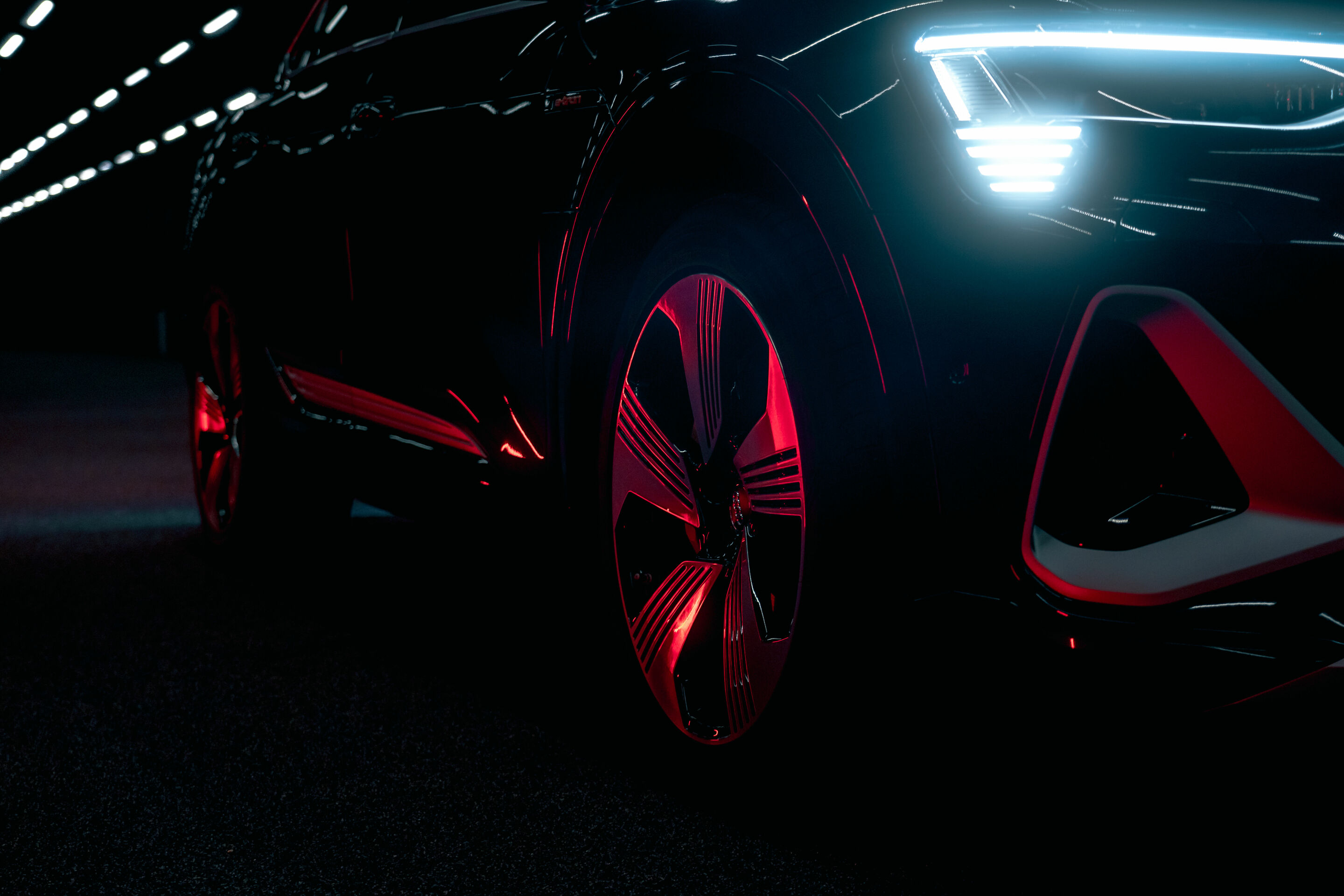Interview – between artistic freedom and legislation: A talk between a developer and a designer of light
Back to overviewStephan Berlitz (Head of Lighting Development) and César Muntada (Head of Lighting Design) are closely working together in the development and design of lighting systems. Their exchange shows how design and functionality at Audi go hand in hand.
Stephan, César, uncompromising functionality of light and aesthetic design – are these two aspects compatible at all?
Stephan Berlitz: As early as in the pre-development stage, we, as engineers, work together very closely with the design team. The questions to be answered are: What will be the benefits of a new technology in terms of functionality, but also in terms of styling? At Audi, light – first and foremost – means safety for drivers and occupants, in other words, to see and to be seen. However, our highly functional technology, let’s say, our HD Matrix LED headlights with the Audi laser as an additional high-beam light, provides scope for attractive styling as well.
César Muntada: Lighting technology and light design are inseparable at Audi. Light becomes the visible expression of ‘Vorsprung durch Technik.’ This means that we’re giving the car an unmistakable face while sharpening the character of the model and brand. At night, an Audi has to be visible at first glance, both close-up and from a distance. Consequently, we use a principle that guarantees recognition without confining the scope which the character of a particular car requires. Specifically speaking, Audi creates a total lighting experience. It begins with the exterior and continues in the interior with contour ambient lighting for which the customer can choose the option of a customized color ambience.
Aside from technological limits and budgets, legislation – with significant worldwide differences in some cases – restricts the potential of lighting development. How do you reconcile such differences?
Stephan Berlitz: Each technology is subject to specific requirements in various countries. The statutory provisions worldwide stipulate minimum spatial, lighting and anti-dazzle requirements. Colors are regulated by law, depending on the light’s function. In the taillight, Audi deliberately uses a vibrant red with a higher wavelength to generate a high-grade look and a more effective differentiation from the yellow turn signal. Generally speaking, though, along with a growing scope for functionality and styling, the complexity of the approval process increases as well and always requires an individual, country-specific assessment. The dynamic turn signal is a perfect case in point showing that legislators are receptive to good ideas. Audi convinced the regulatory authorities that this idea is a gain for road traffic safety. As a result, we succeeded in launching a world first. Many competitors subsequently adopted this function.
Technological progress with hardware, as well as digitization, are raising light to a new level and creating fascinating opportunities. What kind of changes does this entail for you?
Stephan Berlitz: The significance of lighting technology is in a state of fundamental transformation. Due to consistent digitization, the perspective is expanding from driver-centric safety to comprehensive external communication and personalization. The utilization of light is changing: it is turning into a means of communication and, as a result, receiving a social and emotional component. Light will increasingly be able to indicate the intentions of the driver and the vehicle. We have smart, highly adaptive light control technology even today. Projections such as the marking light are an example of external communication with other road users. And the digital OLED, as well, shows how we can achieve car-to-x communication using light – a concept that may become even more important in the context of automated driving.
Light as a language for communication: How can on-road communication work completely without words?
César Muntada: Humans can grasp information particularly fast with their eyes. That’s why we take advantage of the smart interaction between light and the surrounding area in our models. The objective is to achieve simple and direct communication that can be understood without words across cultures and around the world. Digitization will significantly help us in our efforts of setting light into motion and make this form of communication even more understandable. Take, for example, the wiping turn signal whose motion is reminiscent of the beckoning of a hand. In this way, light becomes a universal language in road traffic – both during daytime and at night.
Going forward, what prospects can you already share with us today?
Stephan Berlitz: Over the next ten years, LED will continue to be the dominant lighting technology. In addition, there are two other lighting technologies. On the one hand, it’s the laser light source, in other words, the continuing evolution headed for high performance. On the other hand, it’s the OLED with its area-like, homogenous rear lighting that gives us great latitude. We’re going to continue developing the digital OLED and complement it by new functions. In addition, we’re already working on the next generation: the flexible digital OLED.
César Muntada: The flexible digital OLEDs provide us designers with new freedoms because they’re bendable. This technology enables us to achieve an even better integration of the taillights into the vehicle contour and to generate three-dimensionality. The prospective communication between the vehicle and environment will be found in a combination of simple symbols and dynamic movements. In addition, we want to provide customers with light design styling options according to their personal tastes – in the future even more so than today.
